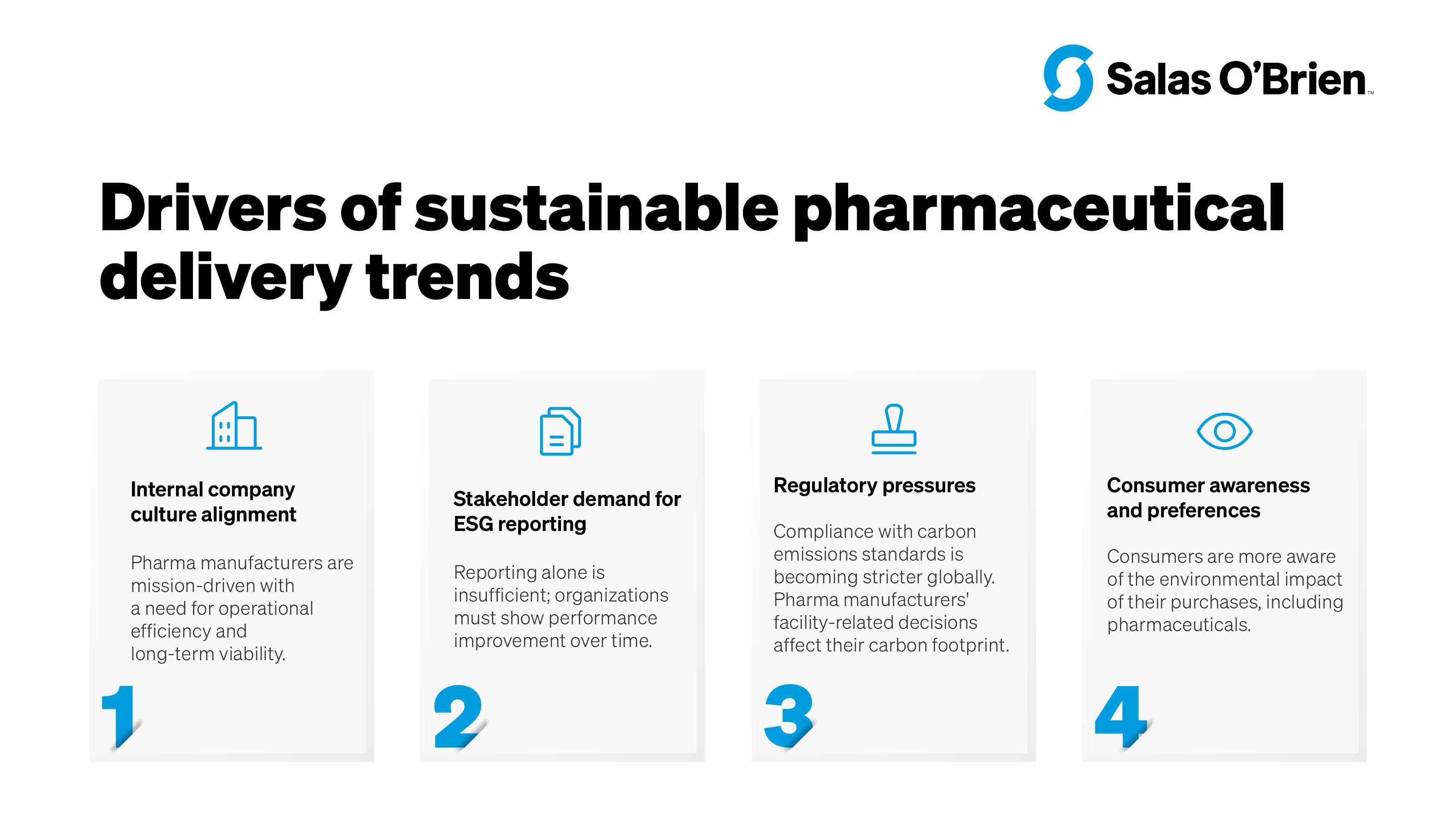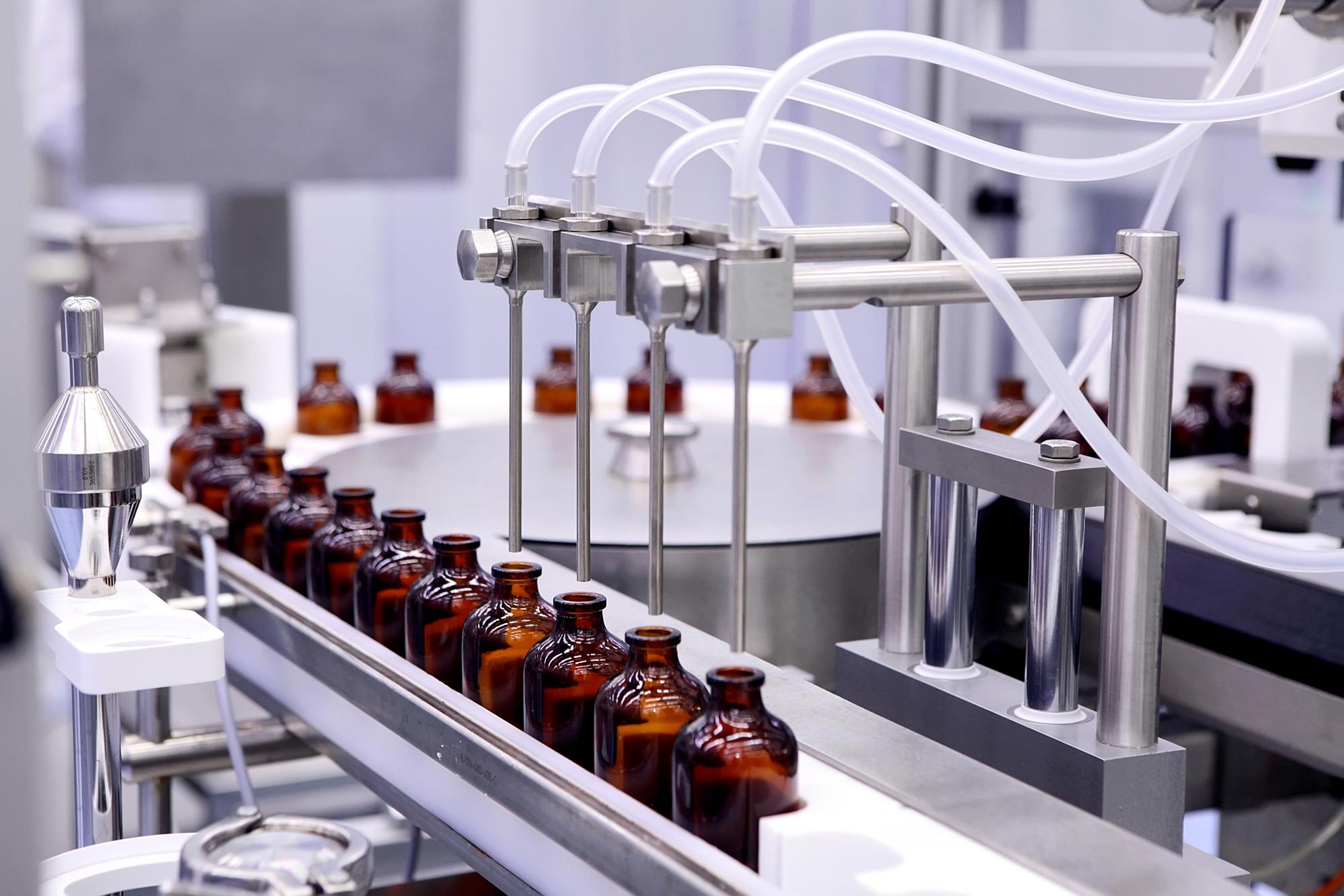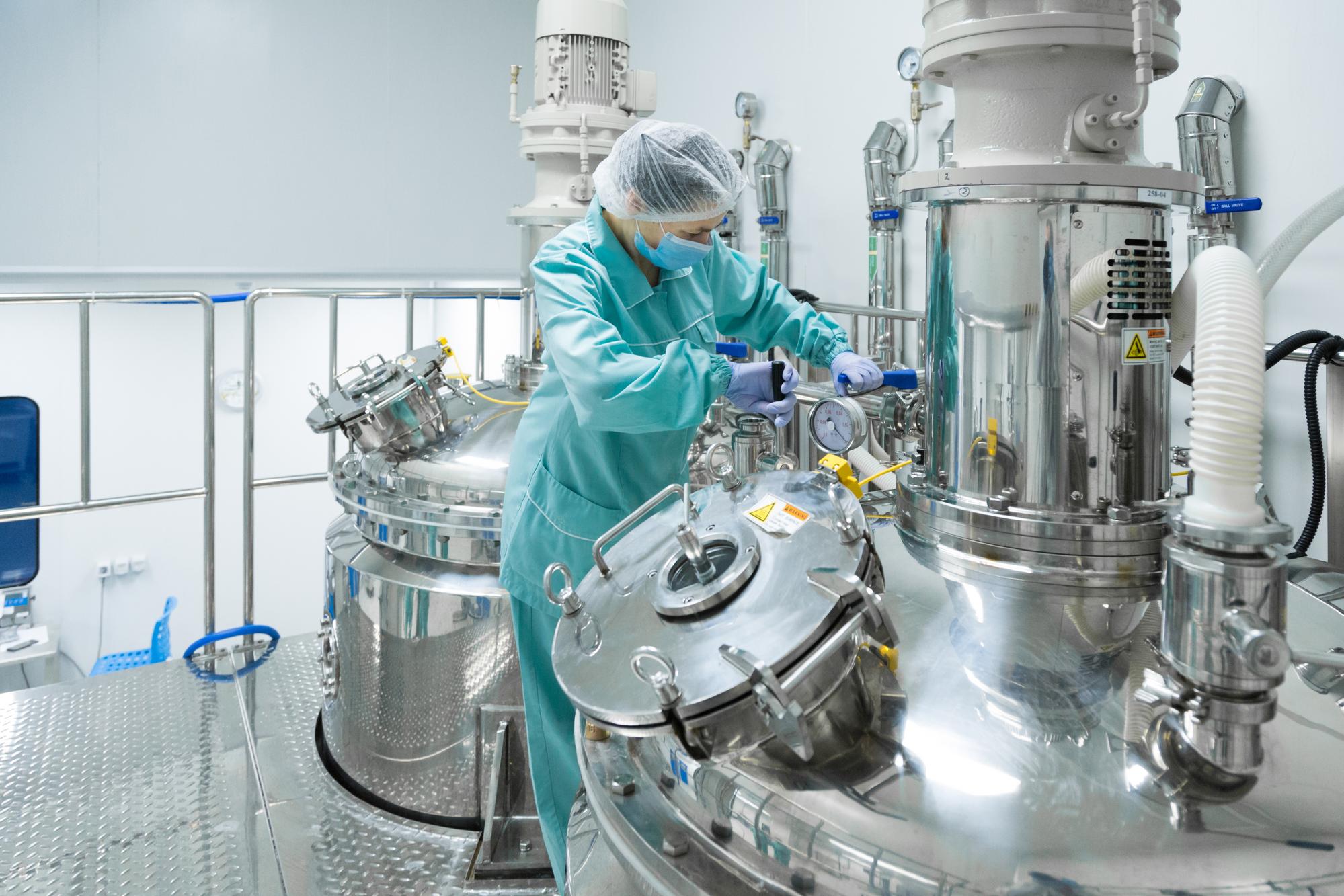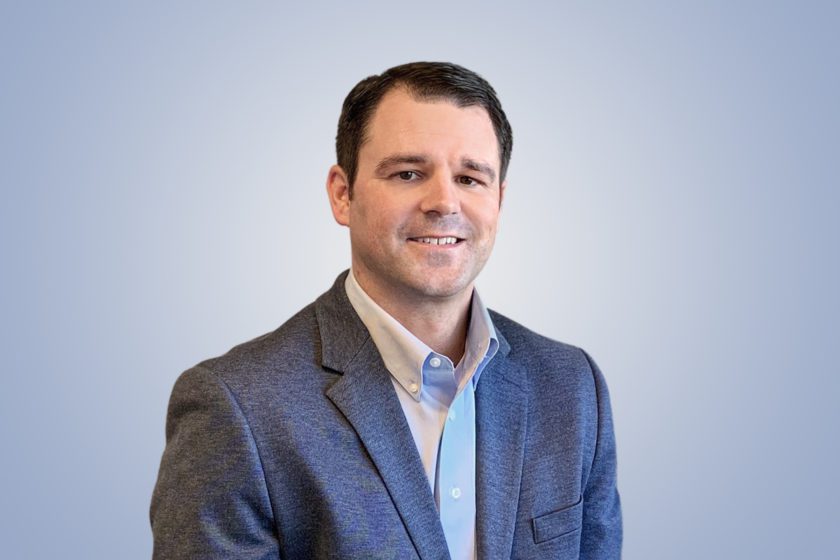News & Insights
Advancing sustainable delivery in pharmaceutical manufacturing
This article explores the challenge of maintaining effective operations while advancing the transition to sustainable practices. We also cover options to produce consistent, incremental improvements that can produce big cumulative results.

Pharmaceutical manufacturers face unique challenges as they support the lengthy development cycles needed to develop safe and effective treatments.
This article explores the challenge of maintaining effective operations while advancing the transition to sustainable practices. We also cover options to produce consistent, incremental improvements that can produce big cumulative results.
Challenges in balancing operational needs with sustainability goals
Clients in pharmaceutical manufacturing know that sustainability aspirations and reality often conflict. As a global industry where quality cannot be compromised, there are tangible challenges to reaching sustainability goals, including:
- High energy and water consumption: The rigorous processes of pharmaceutical manufacturing require large amounts of energy and water. For example, maintaining sterile environments and regulating precise temperatures and pressures demand high energy and water use. Reducing consumption of both resources without compromising quality or safety standards can be complex.
- Aging manufacturing facilities. For decades-old pharma plants, the primary central heating systems were typically built using high-temperature circulating systems. Transitioning these systems to more sustainable heating solutions poses significant challenges, including the need for extended shutdowns to replace heating coils and end devices as well as potential upgrades to the piping system to handle higher flow rates required by low-temperature systems with narrower temperature differences.
- Waste management: The production of pharmaceuticals generates significant waste, including caustic waters and other production by-products. Developing more efficient processes and identifying opportunities to reduce waste and manage it safely and sustainably is a critical issue.
- Financial constraints: Implementing sustainable practices often requires a substantial upfront investment. For example, retrofitting plants with more energy-efficient equipment or adopting renewable energy sources can be expensive. These costs are typically the primary barrier for even the largest global companies and especially so for smaller manufacturers.
- Risk aversion to changing existing processes: Pharmaceutical manufacturers must comply with demanding regulatory standards. To change operating processes — even if the process is not sustainable — requires proven, defendable methods (and quite a bit of paperwork) before approval is granted.

Drivers accelerating the trend toward sustainable delivery in pharmaceutical manufacturing
While long-term reliability and safety have traditionally been key focal points in planning for pharma manufacturers, the priorities are evolving to include sustainability. Some of the factors driving the trend toward setting and reaching environmental goals include:
- Internal company culture alignment. Most pharma manufacturers are by nature mission-driven with an inherent desire for operational efficiencies. Leadership tends to invest in initiatives that support long-term viability, and sustainability supports this goal.
- Stakeholder demand for ESG reporting. Environmental, social, and governance (ESG) reporting has grown in popularity in the past five years. ESG reporting allows stakeholders to evaluate the quality of an organization’s business practices and corporate responsibility. But it isn’t enough just to report on performance; organizations must also take action to demonstrate performance improvement over time.
- Regulatory pressures. While compliance varies by region, there is a clear trend toward more stringent carbon emissions requirements. As pharmaceutical manufacturers plan, build, and maintain their facilities, decisions are made that impact the organization’s carbon footprint. Many pharma clients are beginning to set their own internal policies to control greenhouse gas (GHG) emissions for new projects.
- Consumer awareness and preferences. Consumers are becoming increasingly more conscious of the environmental impact of the products they consume, including pharmaceuticals. Meeting these consumer preferences can enhance brand reputation in the pharmaceutical industry.

Opportunities for advancing sustainable delivery in pharmaceutical manufacturing
As the industry moves toward more sustainable delivery, the opportunities for improvement are multifaceted. Enhanced energy efficiency and the integration of renewable energy sources offers significant potential for reducing carbon emissions. Furthermore, leveraging innovative technologies and process optimizations can drive substantial gains in resource conservation and minimize environmental impact.
The following are practical strategies that pharma manufacturers can leverage incrementally/over time to reach decarbonization and sustainability goals.
Strategies for reducing energy consumption
- Retro-commissioning (RCx). During the normal course of business, it’s common for a facility to complete multiple uncoordinated construction projects, repairs, and process changes. Over time, these changes can inadvertently lead to inefficient building system operation. RCx finds and addresses these gaps in performance by optimizing existing systems.
- Next-generation climate control systems. For many manufacturers, approximately 65% of plant energy expenditures come from HVAC. Newer approaches for HVAC such as low-temperature water systems, closed-loop hydronic systems, or geo-exchange systems reduce energy loss and water usage as well as greatly reducing operating costs.
- Heat recovery strategies. Useful heat that was previously lost through cooling towers and radiators can be recovered with heat pump technology. Heat pumps take heat generated as waste by one system and move it to another. For example, waste heat from a cooling process can be shifted to reheat coils. Heat can also be recovered from sanitary systems to use for thermal demands. These systems are completely isolated and insulated, so they operate without cross-contamination.
- Energy management systems. The latest advancements in energy management systems incorporate self-diagnostic features, allowing them to gather valuable data to guide operational adjustments and enhance energy efficiency. In industrial settings, the implementation of a Supervisory Control and Data Acquisition (SCADA) system provides real-time information regarding equipment and processes, empowering operators to promptly detect and address any concerns.
Strategies for sustainable energy sourcing
- Electrification. Many processes in pharmaceutical manufacturing are reliant on steam generated through combustion boilers. Changing from combustion-powered equipment to electric equipment creates the option for renewable energy through power purchase agreements with utility providers. This strategy will suit some plants more easily than others. For example, switching from combustion boilers to electric boilers could require a major upgrade on the existing facility electrical infrastructure, and local utility providers may not have renewable energy resources available. Still, electrification as a long-term strategy can provide substantial wins for some pharma plants.
- On-site renewable energy sources. Producing energy through renewable local energy systems, such as solar fields and panels on parking structures, reduces the building’s carbon footprint and improves energy efficiency. Pairing on-site energy production with a battery energy storage system (BESS) can also provide resiliency in the event of grid failures and decrease demand charges. Technology such as Ultra Safe Nuclear with Micro Modular Reactors (MMR) is emerging and may become a viable renewable source in the next five to ten years.
Sustainable strategies for facility design
- Right-sizing equipment. Often equipment can be overdesigned to “be on the safe side.” But computer modeling and risk assessment can prevent equipment from being built bigger than it needs to be, preventing waste and excess energy usage and driving down operational costs.
- Improving the building envelope. Improving the insulation and air tightness of the building envelope in facilities can reduce heat loss in winter and heat gain in summer, improving energy efficiency and reducing carbon emissions.
- Incorporating high-recycled content materials. From cold-formed steel to next-generation concrete with CO2 capture, materials are evolving to meet client demands for sustainable building material options.
- Building conversion / adaptive reuse. The shift to remote work in the commercial sector has emptied prime office space in biopharma research hubs and created opportunities for adaptive reuse. Leveraging existing structures is a highly green strategy that reclaims materials, significantly decreases the CO2 output for constructing a ground-up facility and protects green space.

The win of small, consistent, incremental changes
At Salas O’Brien, we’ve seen the remarkable impact of pharmaceutical companies that embrace a strategy of incremental, persistent adjustments to enhance their sustainability efforts. Through this approach, entire ecosystems have been revitalized and operational efficiencies have progressed significantly. Our clients have achieved noteworthy success through actively participating in decarbonization planning and adopting sustainable delivery practices.
Salas O’Brien possesses the expertise and talent needed to reach your sustainable pharma manufacturing goals. Our team is well-equipped to tackle the complexity and help you maintain operations as you implement strategies to achieve a greener and more sustainable future.
For media inquiries on this article, reach out to Stacy Lake, Director of Corporate Communications
Digital twins in pharma manufacturing

Cyle Graber, PE, MBA
Cyle Graber is an expert in industrial process solutions and engineering. His experience bridges many different manufacturing atmospheres including the automotive, industrial chemicals, plastics, food and beverage, pharmaceuticals, and nutrition industries. This cross-pollination of contexts allows him to bring innovation between industries. Cyle serves as a Principal at Salas O’Brien. Contact him at [email protected].

Allen Koester, PE, PMP
Allen Koester is a professional engineer and certified project manager with 35 years of experience, including 31 in FDA-regulated environments. He has led large capital projects exceeding $150M from concept to implementation and has broad knowledge of major engineering and construction installations. He retired from AstraZeneca in 2016 and now serves as a Senior Vice President at Salas O’Brien. Contact him at [email protected].

Anderson Kong, P.Eng, LEED AP
Anderson Kong has been serving clients in the pharmaceutical industry for more than 20 years. With an extensive portfolio from global firms to startups, Anderson has gained invaluable insights into their unique perspectives on various engineering challenges and the intricacies of project budgeting. Anderson serves as a Principal at Salas O’Brien. Contact him at [email protected].

Jamie Landers, PE
Jamie Landers is a market leader in energy and utility systems and helps clients identify opportunities to reduce operation costs, improve reliability, and deliver new services. He is well-known in the industry for his ability to drive progress and resolve problems. Jamie serves as a Senior Vice President at Salas O’Brien. Contact him at [email protected].

John Westphal, SE, LEED AP
John Westphal is a seasoned leader with over 30 years of dedicated service to the design and construction industry. Throughout his career, John has made significant contributions to numerous high-profile pharma projects, demonstrating his expertise in structural engineering and sustainable design. John serves as a Managing Principal at Salas O’Brien. Contact him at [email protected].